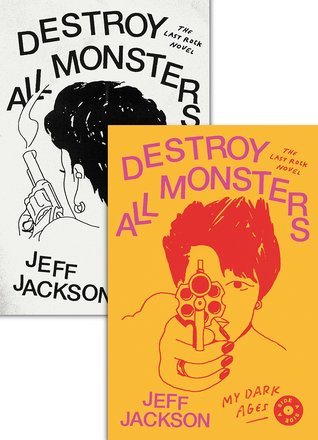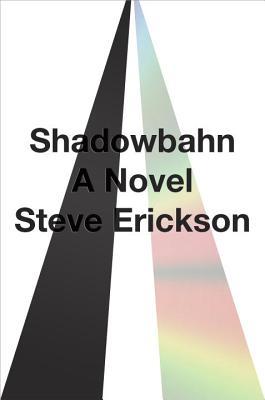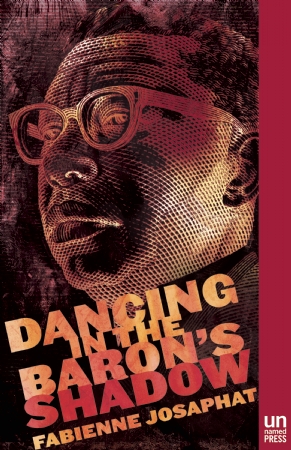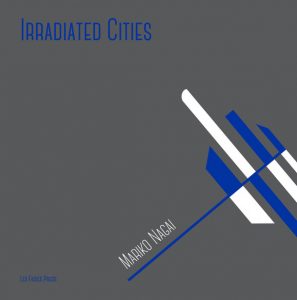
Les Figues Press, 2017
REVIEWED BY GIOVAN ALONZI
—
Nor shall death brag thou wand’rest in his shade,
When in eternal lines to Time thou grow’st.
—William Shakespeare, Sonnet 18
the cracked face of an angel : the shadows of men left on walls
—Mariko Nagai, “The Specimen Nagasaki”, Irradiated Cities
Beloved apocalypse media, shall I compare thee to Sonnet 18?
More temperate—Roughs winds—Too hot—all that…
To prepare for it?—The apocalypse.
To experience it? —The apocalypse.
To savor it? —The apocalypse.
To feel the unfeelable apocalypse?
To consume, over and over again, especially if it’s fiction.
Especially if there are zombies.
Especially (especially in Hollywood) if a cut/gruff/hot/frumpy white man kicks zombie-ass to save the whole world?
If we can see a breathing apocalypse, does it give us life?
How about: sourcing an apocalypse? Anchoring it to nonfictional prerogatives, contemporary to us, dependent on testimonies and footage and technology? Truth may quickly decay into porn: despised, fetishized, commercialized, shunned, “interesting-ized”, e.g. “: it means that when you speak of your experience, some will say that you are selling your tragedy : it means that you keep telling the story of that day again & again, that your voice sounds mechanical & your story soulless :” (Nagai).
The fictional apocalypse bears a small, but powerful promise: that things might start over, that we may be able to see it through and start anew. This is the hope of the fictional apocalypse: redemption.
The apocalypses that have already happened on Earth, however, are far more fraught—after they are manufactured and dealt as paternalistic gifts and savage, entitled domination, they linger, fusing to us: European settler colonialism in North America and the eradication of indigenous peoples in modern day Dominican Republic and Australia were apocalypses; the African slave trades running through the Atlantic and Indian oceans were apocalypses; genocide is a people’s world ending.
These apocalypses bear no redemption. In fact, the through-line Mariko Nagai connects between the atomic events in Hiroshima, Nagasaki, and Fukushima, is that they all primarily bore suffering; meaning, they bore capital.
Irradiated Cities: a work at the epicenter of its blast, processing the start of its after, the beginning of its ending, the economic development of its shame: a book not intending to deliver new information (perhaps, more, conventionalized information from a series of ground-zeros); a book that reminds us that the culture of irradiation has only just begun, that irradiation has no truck with certainty, that treating irradiation in the human body as “deadly and unpredictable” creates a surplus of second-class citizens to be exploited by politicians and artists alike, that irradiation is handled like a fruitless aphorism (something like “knowledge demanded of the masses cannot be known as a mass”). For even if one does follow a path of certainty through an irradiated city, a mass of rumors irradiates everything.
Nagai’s meditations on the atomic history of Japan are presented in four parts: “Hiroshima”, “Nagasaki”, “Tokyo”, and “Fukushima”—“Hiroshima” and “Nagasaki” focus on their respective nuclear blasts on August 6 and August 9, 1945; “Tokyo” on post-WWII Japan, the U.S. lead Bikini Atoll nuclear test blast, and the slow embrace of nuclear energy in Japan; “Fukushima” re-centers the effects of the recent nuclear catastrophe in March 11, 2011. All four sections present a distillation of facts and rumors circulated in the wake of their respective tragedies, and the similarities these moments shared with each other. The writing resists purity, including constant repetition of phrases and lines, slightly modifying and mutating as the accounts progress.
The section “Hiroshima” starts with “: enough : enough has been told again & again : now it’s iconic, offering no space for an alternative : (but then, maybe there never was an alternative) :”. The “:” run through the entire book, simultaneously connecting and separating everything Nagai writes in Irradiated Cities, a crucial textual posture of the work—we are soaked in the illusion that things can be separate, that separation is safety, that separation is danger. For what do nuclear blasts and nuclear meltdowns yield more than paradoxes? One primary paradox being the immediate commodification of hibakusha [survivors of atomic bomb blasts / irradiated people] trauma: “: we make our living going through the rubble to find intact skulls, pulling out gold teeth, or keeping just the skulls to sell to the Americans, & they buy anything, including suffering, on this sojourning to the land of the bomb :” Nagai writes this early in the book, mindful of the history her book is attached to as another form of Japanese nuclear catastrophe media. This is where the stakes of the book are essential—in a history rife with exploitative documentation, how does one write about nuclear catastrophe? Irradiated Cities might be asking: How does one write about the experience of death en masse honestly? Honesty, connoting compassion as much as it should raw, untainted facts? As much as it should the superstitions built around the deadly unknowns a society is bound to after an apocalyptic event?
Nagai writes from the perspective of someone who has been listening for a long time (in her acknowledgements, she thanks strangers she met in Hiroshima, Nagasaki, and Fukushima who shared their stories with her), locating the lingering hum of nuclear tragedies, and at the same time fighting the trap of iconifying: the flattening of personal experience—the ultimate removal of empathy for those who’ve experienced nuclear catastrophes personally and survived.
In The Writing of the Disaster, Maurice Blanchot writes “The disaster, depriving us of that refuge which is the thought of death, dissuading us from the catastrophic or the tragic, dissolving our interest in will and in all internal movement, does not allow us to entertain this question either: what have you done to gain knowledge of the disaster?” While Blanchot seems more concerned with a cosmic and pervasive existential disaster of the human condition, I think the part that resonates with real-life apocalyptic events that are survived is this removal of refuge. That death, before having its harbinger irradiate you, with twenty Sievert of radiation or burabura-sho (the loser’s disease), is one of the only things in this world that is actually simple. And though a book might be proof that someone has gained some type of knowledge, excavating the complexity of a material disaster does not have to be a gauntlet, nor do I think Nagai is attempting one. In it, she is far less concerned with knowledge as truth, and far more concerned with knowledge as the life of rumors and longevity (and simultaneous invisibility) of iconifying. “: this city :” she writes of 1945 Nagasaki, “: this entire city is a scientific specimen : […] : when will it be freed? : when will it be freed from the shadow? :”.
Many questions in this book remain unanswered. But, she does provide some: she tells us “How To Treat That Mysterious Disease”; she tells us “No One Talks About It, No One Can Talk About It”; she tells us “The Story of Hibakusha”; she tells us “What It Means to Be Irradiated”; she tells us “How to Build Nuclear Power Plants”; she tells us “Rumors of Distant Disasters”; she tells us “Things People Say”; she tells us “Truth & Lies”.
Her prose are cunning in their mutability—through imitation of guides leading atomic tours, or genuine reimaginings of a city at the moment a bomb dropped on it, or listing observations in sobering “how-to”’s, it always feels like Nagai’s solemn voice, not shying away from the culture of rumor-making in the wake of bombs and nuclear meltdowns; her writing treats rumors as a poetic form: amassing, contradicting, repeating the reasons for why, the reasons for why not. This way of speaking—perhaps the only way we might socially cope with apocalyptic events—produces cultures obsessed with scarring, however visible or invisible, especially among those who are not hibakusha, those who don’t have to deal with a gaze hungry for symptoms of an apocalypse.
The blunt sentences become morbidly adaptable in the flattened, physically square body of her prose: if one assumes the “:” means all of the sentences are connected, and goes on (as I did) to dissect the sentences from various parts of the book and re-connect them to other parts, out of the intended order, a sick momentum appears: “: they do not know that their bodies now carry a bomb inside : a ticking bomb :” (“The Living Calls to the Dead”, from “Hiroshima”), “: psychologists study the survivors & their ways of living : […] : 5592 bodies autopsied in 1948-1950 :” (“The Specimen Nagasaki”, from “Nagasaki”), “what is medicine? doctors ask themselves : […] : who are they doing this for? :” (“Eighty-Three Days in 1999”, from “Tokyo”) “: the men in suits came with promises :” (“Before the Beginning”, from “Fukushima” ) “: it is a good era : […] : workers at plants are quietly getting sick, leukemia, bleeding gums, bleeding noses, exhaustion, cancers : doctors tell them there is nothing wrong :” (“A Good Era”, from “Fukushima”). This is the nature of rumors Nagai portrays—they’re accessible; they’re far more about providing sense than any deliberate truth or falsity; they can be experimented with; mostly, especially when doctors are involved, we keep repeating ourselves.
In Cities, Nagai uses “before” and “after” as verbs (“: they come : they come to after the pika [before] & don [after] :”) and states of being (“: it is always beautiful on a catastrophic day : it is beautiful because the before is beautiful & the after dreadful :”). Though writing about events that occurred before Milton Friedman and The Chicago Boys’ academic development of neoliberal globalization, Nagai’s attention to U.S. interests dominating Japanese socio-economics hearken to Naomi Klein’s “shock doctrine”: “America’s ‘free market’ policies [that have] come to dominate the world—through the exploitation of disaster-shocked people and countries.” Even after America bombs Japan, Japan justifies nuclear energy production as “: …American technology, no, it’s not the same as atomic bombs, it’s better, it’s safer, it’s cheap :” in order to get poor inhabitants of Fukushima to sell their land to TEPCO (Tokyo Electric Power Company). The before is manufactured as soon as the after is; a two for one, detailed pointedly by one title in Irradiated Cities, “Hiroshima : ????” . Nagai equates the Katakana spelling to a “: synonym for tragedy : the first city :” connected to its original spelling (??) only by nostalgia for “the Before”.
Like this after-ing of a place, the production of rumors produce insatiable curiosity—“: suffering is photogenic :” Nagai writes in “Hiroshima : ????” . She follows this up in the piece “What It Means To Be Irradiated”, saying:
“: it means that every year, when those days come around, photographers take your photos without permission, as if hibakusha lost the passport to humanity the moment they were irradiated : & you see the faces of these journalists & photographers, their eyes gleeful because the more scars you have on your face, the more tragic you look, the more they can elevate you into an icon : it means to be told by politicians & doctors to be sterilized so that there wouldn’t be bad genes in the future :”.
Between pieces that list off descriptions like this, reimagined day-of-the-blasts in Hiroshima, Nagasaki, Bikini Atoll, and Fukushima, and references to pop phenomena like Hiroshima Mon Amour, Godzilla, Hiroshima Maidens and Nagasaki Maidens, Nuclear Power Plant Sweets and Radium Eggs, Irradiated Cities presents us with relentless crises of empathy, perhaps asking if its possible for a society to do catastrophe right. Towards the end of the book, I began to see Nagai as a detective dissecting a murderer’s devious plot—she is aware of all points of entry, times of death, suspects involved, their motivations, potential witnesses and outcomes of the crimes committed. But, instead of soliloquizing as an individual, she presents a poly-vocal deposition bound to its contradictions. But how does one put “the iconic” on trial anyway? More importantly: how do cities process shame? Cities are machines—the nostalgia for prosperity points to money and commercial development. Wealth becomes healing, treatment remains a commodity, and silence becomes the only indication of disaster.
Silence—imposed by American censorship of documentation of Hiroshima and Nagasaki after the bombs detonated, imposed by the trauma of the bombs themselves, imposed by one’s own community who doesn’t want to hear about the survivors of the bombs anymore—is everywhere in this book. Where silence may indicate shame though, Nagai looks to it as a way of writing about Japanese nuclear catastrophe without exploiting those directly affected. What can we find in the silence? “: stones sing their irradiated songs & enough will be said about this moment for years to come : but maybe it is not enough : there is never enough in this everafter story of one bomb & another bomb & the illumination of the night : & the silence :”. For every one page of prose, there are about three pages of black and white photography—all given full, square pages, and all taken by Nagai herself in the cities she is writing about. In all 133 pages of the book, only ten photographs have people in them—six of those only show the hands of the subjects, two only showing feet, and the only face not obscured by a blur or darkness is a face in an advertisement on a street in Tokyo. The photography, all mesmerizing, transmits total silence, simultaneously refusing to exploit humanity’s visible scars. It’s beautiful effect: the silence cuts through the sensational rumor-making and empathy documented in the language.
It’s important to know that Nagai isn’t fishing for epiphanies about nuclear bombs and meltdowns either—her book is much larger than that. More than anything, she’s written a way to feel the irreverent permanence of national traumas, a sense of trauma’s half-life in the flesh of these cities, as well as the minds, products, and industries of their inhabitants.
Blanchot writes, “when the disaster comes upon us, it does not come”—is it because it is already always here? Perhaps the primary effect of apocalyptic disasters, like bombs and meltdowns, is emphasizing a society’s existing alienations—from other cultures, as well from itself. That said, I do not think Irradiated Cities is posing as a model—at no point is Cities a general warning for those unaware of nuclear catastrophe, not an effort to universalize hardship and suffering; it is an attempt to feel and see the nuclear legacy of Japan without exploiting quotidian life—writing towards the constant paradox of capital (the person/commodity), the amnesia induced by obsessions with national wealth, and, if you listen like Nagai, the murmurings of cities: “: on this shore, all is well : because they tell themselves : on a distant shore : it all happens on the distant shore : it can never happen here :” (“Rumors of Distant Disasters”, from “Tokyo”).
—
Giovan Alonzi’s writing has appeared in VOLT, Entropy, and The Believer. He earned his MFA in Creative Writing from CalArts, and currently teaches writing composition at East Los Angeles College.
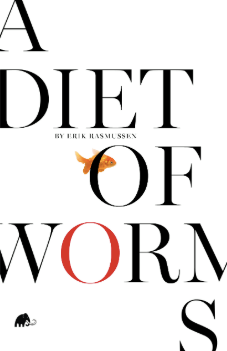
![[PANK]](https://pankmagazine.com/wp-content/themes/pank/assets/images/pank-logo-large.png)

